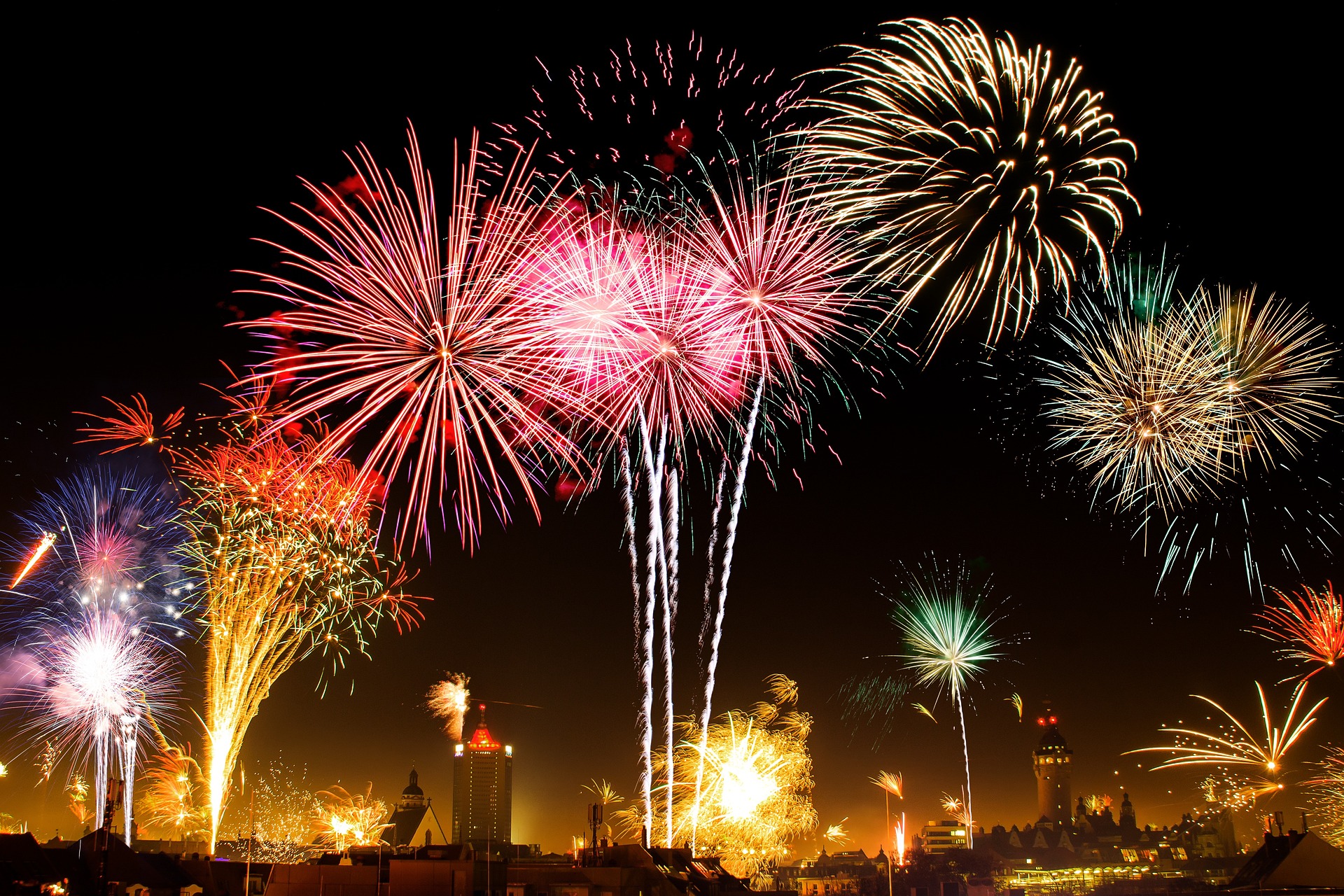Over 4,000 years ago the Babylonians celebrated the new year with an 11-day festival, Akitu. That March festival occurred after the Vernal Equinox, the day of equal sunlight and darkness, and commemorated the victory of their sun god over an evil sea goddess. During the festival they either reaffirmed the king’s divine power over his people or replaced him.
The advent of Julius Ceasar’s Julien calendar in 46BC shifted the start of the new year from Springtime to January 1st. The month of January was named after the god Janus, whose two faces allowed him to look back into the past and forward into the future. Romans celebrated the new year by offering sacrifices to Janus, exchanging gifts with one another, decorating their homes with laurel branches, and attending raucous parties.
In the Middle Ages, Christian leaders replaced the January 1st start of the new year celebrations with a celebration of religious significance, December 25th, the birth of Christ.
Pope Gregory XIII reestablished January 1 as New Year’s Day in 1582 with his Gregorian Calendar.
Many New Year’s celebrations begin December 31—New Year’s Eve—and continue into the early hours of January 1. Revelers often enjoy meals and snacks thought to bring good luck for the coming year. In Spanish-speaking countries, people bolt down a dozen grapes-symbolizing their hopes for the months ahead-right before midnight. In many parts of the world, traditional New Year’s dishes feature legumes, which herald future financial success; examples include lentils in Italy and black-eyed peas in the southern United States. Because pigs represent progress and prosperity in some cultures, pork appears on the New Year’s Eve table in Cuba, Austria, Hungary, Portugal, and other countries.
Other customs that are common worldwide include watching fireworks and singing songs to welcome the new year, including the ever-popular “Auld Lang Syne” in many English-speaking countries.
The practice of making resolutions for the new year is thought to started with the ancient Babylonians, who made promises to earn the favor of the gods and start the year off on the right foot. They would vow to pay off debts and return borrowed farm equipment.
First Night has become popular in North America as an artistic and cultural celebration on New Year’s Eve, taking place from afternoon until midnight. Some cities have all their events during the celebration outside, but some cities have events that are hosted indoors by organizations in the city, such as churches and theaters. Since it happens on New Year’s Eve, First Night celebrations are held on the last night of the old year. First Night celebrates a community’s local culture, often featuring music, dance, comedy, art, fireworks and, in some cities, ice sculptures and parades. Many of these celebrations have been suspended during these last years of Covid.

